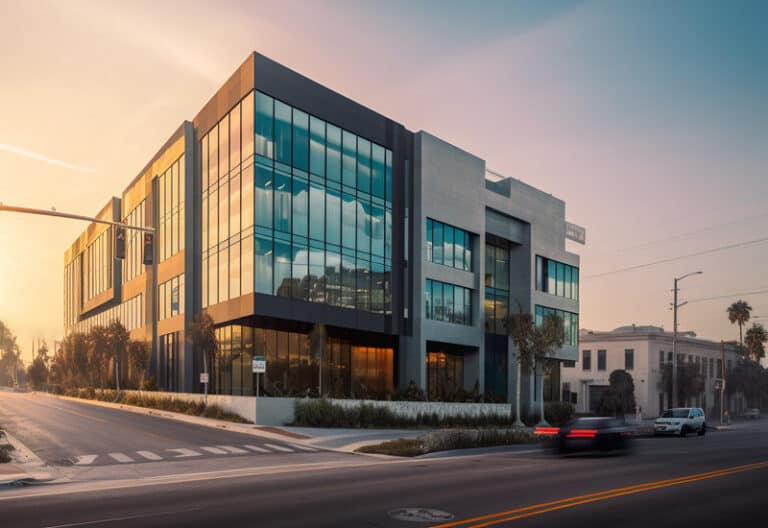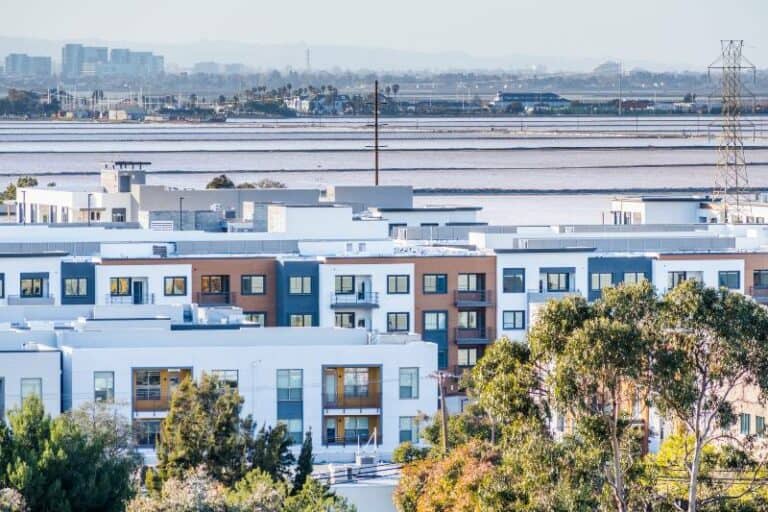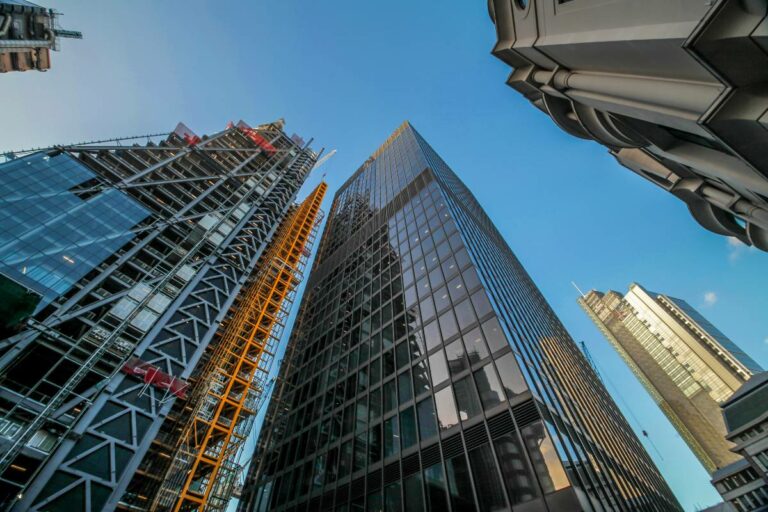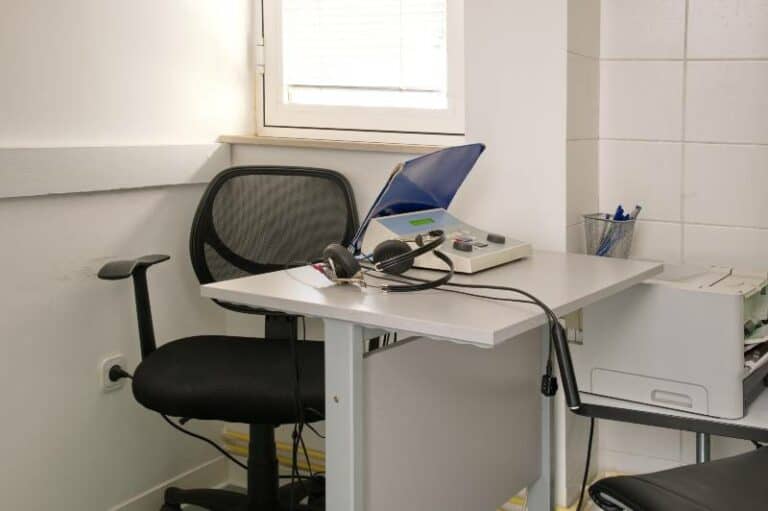If you own are a property manager, or an investor that is considering purchasing commercial real estate you might be considering a range of options such as upgrading amenities, renovating existing facilities, or expanding into new markets. While these strategies can certainly add value, it’s important to keep in mind that they may not produce lasting results if certain fundamental issues are not addressed. From increasing energy efficiency and enhancing curb appeal to offering support services and addressing tenant needs, there are several proven ways to boost the overall value of your cash flow and your commercial property. Read on for more info on how you can ensure maximum return from your next big real estate endeavor!
Boost your commercial property’s value by implementing strategic renovations, enhancing curb appeal, and reducing operating costs. Understanding market trends and the property’s location impact is vital. Ensure you’re legally compliant while implementing these improvements. A valuable commercial property can significantly enhance your earnings and offer a competitive edge in the real estate market.
Key Takeaways
- Increasing the value of a commercial property involves various factors including physical improvements, cost reduction, effective marketing, and leasing strategies.
- Understanding current real estate market trends and the impact of location is essential to increase the value of a commercial property.
- Compliance with relevant legal and regulatory requirements is a crucial aspect of enhancing the value of commercial properties.

Understanding the Value of Commercial Property
The value of a commercial property is primarily determined by a combination of physical, economic, and locational factors. At the most fundamental level, the physical attributes of the property, such as the quality of construction, age, the state of repair, and its layout, significantly impact its value.
For example, a commercial property with modern construction and a well-maintained infrastructure would typically command a higher price compared to older office buildings that may require substantial structure rehabilitation or repair.
However, the physical attributes of the property are just one part of the equation. The economic variables, such as the property’s ability to generate income, also play a crucial role in determining its value.
This is typically assessed through the net operating income (NOI), which is calculated by subtracting the property’s operating expenses from its gross income. For instance, a commercial building with a high occupancy rate and high rental income would likely have a higher value due to its stronger NOI.
Beyond the physical and economic attributes, the location of the commercial property can significantly influence its value.
The old adage, “location, location, location” holds true in the world of real estate. If a commercial property is situated in a bustling area with high foot traffic, it’s likely to attract more tenants, and in turn, generate higher rental income.
On the other hand, a similar property in a less desirable location might struggle to find tenants, leading to lower income and hence, a lower property value.
Furthermore, the value of commercial property is often influenced by the broader economic climate and market trends. For example, if the market is experiencing a downturn, property values may decrease irrespective of the individual attributes of the property.
On the flip side, during a period of economic growth, demand for commercial space can increase, leading to higher rental rates and property values.
The Concept of Return on Investment (ROI)
Return on Investment, often referred to as ROI, is a key concept in investing and is particularly relevant when assessing the value and potential profitability of commercial real estate investments. ROI is a percentage that represents the return on an investment relative to the cost of the investment.
To put it simply, ROI is calculated by taking the net profit from an investment, subtracting the cost of the investment, and then dividing the result by the cost of the investment. This is then multiplied by 100 to provide a percentage. The formula is as follows:
ROI = (Net Profit / Cost of Investment) x 100
This measure can provide a straightforward assessment of the potential profitability of different investments, allowing investors to compare and contrast various opportunities.
For example, let’s say you purchase a commercial property for $500,000. After one year, you’ve received $50,000 in rental income and the property’s value has appreciated to $525,000. The net profit from this investment would be the sum of the rental income and the capital appreciation, which is $75,000 ($50,000+$25,000). Using the ROI formula, the ROI on this investment would be 15% (($75,000 / $500,000) x 100).
It’s important to remember that ROI is just one measure of investment performance, and it doesn’t account for risk, the time value of money, or other potential costs or benefits that may not be immediately apparent. Therefore, while it can provide a useful starting point, it should be used alongside other metrics and qualitative factors when assessing an investment.
Ways to Increase the Commercial Property Value
Improving the Physical Appearance: The first impression of a property can greatly influence its perceived value. Improving the physical appearance of your commercial property can, therefore, significantly enhance its marketability and, consequently, its value. This could involve aesthetic enhancements such as fresh paint, improved landscaping, updated signage, or a renovated lobby. For instance, upgrading the façade with modern design elements can create a more inviting and professional look, thereby attracting high-quality tenants and customers. It’s crucial to remember that the cost of these improvements should be weighed against the potential increase in value to ensure a positive return on investment.
Upgrading Infrastructure: Beyond aesthetics, it’s equally essential to ensure that the building’s infrastructure is updated and well-maintained. This could involve upgrading HVAC systems, improving plumbing and electrical systems, or even enhancing internet and telecommunications infrastructure.
For example, retrofitting an older building with high-speed fiber optic cables can make it more attractive to tech-savvy tenants who require reliable and fast internet. Just like physical improvements, the costs associated with these upgrades should be evaluated against the potential increase in rental income or property value to ensure it’s a worthwhile investment.
Enhancing Energy Efficiency: In the current era of increasing environmental awareness, enhancing the energy efficiency of your commercial property can be a significant value-add. Energy-efficient properties not only reduce operational costs but also appeal to eco-conscious tenants and consumers.
This could involve installing LED lighting, adding solar panels, improving insulation, or upgrading to energy-efficient appliances. For instance, by installing a solar panel system, a property can generate its own electricity, reducing energy costs and potentially offering a unique selling proposition to attract tenants.
Increasing Rental Rates: If market conditions permit, increasing rental rates can directly boost the income generated by commercial property, leading to a higher value. However, this should be done carefully to avoid driving away existing tenants.
Researching comparable properties in the area can provide a benchmark for appropriate rental rates. Additionally, offering value-added services or amenities, such as cleaning services, security, or covered parking, can justify higher rents. Make sure to also challenge the existing property taxes.
Attracting High-Quality Tenants: High-quality, long-term tenants can provide a stable source of income and decrease the costs associated with high tenant turnover. Attracting these types of tenants often involves maintaining a well-managed, attractive property and offering competitive lease terms.
For example, a shopping center that is able to secure a long-term lease with a popular, reliable retailer could benefit from a steady income stream, increased foot traffic, and a potential boost in the property’s value.
Remember, while these strategies can increase the value of a commercial property, it’s also important to consider the cost of these improvements and the potential return on investment.
Not all improvements will provide a significant return, so it’s crucial to strategically plan and prioritize any upgrades or changes. The goal should always be to maximize the property’s potential while maintaining a healthy balance between investment and return.
Speaking of that, read an article I wrote here about Commercial Property Staging: Why It’s Essential for Success, this can help you in making sure your investment property is attractive to high-quality tenants.
Legal Considerations in Enhancing Commercial Property Value
When enhancing the value of a commercial property, it’s essential to consider the legal implications and requirements. Two key areas to focus on are zoning laws and building codes.
Zoning Laws and Changes
Zoning laws are regulations that dictate how property in specific geographic zones can be used. They are critical to understanding as they can limit the types of improvements or changes you can make to your commercial property.
For example, a zoning ordinance might dictate that a property can only be used for retail purposes. If an owner wanted to convert part of the space into residential units to increase the property’s value, they would be restricted from doing so by zoning laws. It’s essential to consult local zoning ordinances before making any significant changes to the use or structure of a property.
However, keep in mind that zoning laws are not always set in stone. In some cases, it may be possible to apply for a rezoning or a variance. A rezoning involves changing the zoning designation for a particular property, while a variance is a request to deviate from the current zoning requirements. However, securing a rezoning or variance can be a complex, time-consuming process, and approval is not guaranteed.
Building codes and permits
Building codes set the standards for the construction, design, and maintenance of buildings to ensure public health, safety, and welfare. When improving or upgrading a commercial property, it’s important to adhere to these codes.
This means, for example, if you’re planning to upgrade the electrical system in a building, the work must be done in accordance with local building codes, often by a licensed contractor. The system will likely need to be inspected by a building inspector to confirm it meets the necessary safety standards.
Additionally, any significant modifications or improvements to a property typically require a building permit. The permit process ensures that the planned changes are in compliance with local building codes and zoning regulations. Failing to secure the necessary permits can result in fines, legal action, and could even require you to undo the work that has been completed.
For example, if you plan to add a new elevator to a commercial building to increase its value and attractiveness to tenants, you’ll need to secure a building permit before the work begins. The work will need to be completed according to specific safety standards, and the elevator will need to be inspected and approved before it can be put into use.
In conclusion, while enhancing the value of a commercial property can be a lucrative endeavor, it’s crucial to be aware of and adhere to all relevant zoning laws and building codes. Consulting with knowledgeable professionals, such as real estate attorneys and licensed contractors, can help ensure that all improvements are legal and up to code, safeguarding your investment and potentially saving you from costly legal issues down the road.
Is Adding Value to Commercial Real Estate Easy?
While the process of adding value to commercial real estate may sound intriguing and profitable, it is by no means a simple or quick task. The concept of “value-add” investments indeed demands investors who have a thorough understanding and expertise in identifying potential areas where improvements can be made to enhance the property’s worth.
In essence, a value-add strategy in commercial real estate involves acquiring a property, making certain improvements or modifications to increase its value, and then capitalizing on this increased value through higher rents or a sale. However, the execution of this strategy requires detailed knowledge about the market, the property, and the potential tenants or buyers.
For one, understanding the current real estate market conditions, both at a macro and micro level is crucial. An investor needs to identify the right time and place to buy, as well as the ideal time to sell or lease after the improvements have been made. A property purchased in a down market might have significant potential for profit if market conditions improve, but could also lead to losses if the market deteriorates further.
Further, knowledge about the property itself is critical. The investor needs to have a keen eye to identify properties that are underperforming or in need of certain improvements. They also need to understand the cost and complexity of these improvements, and whether they will indeed add significant value to the property.
For instance, adding an elevator to a multi-story commercial building might attract more tenants and allow for higher rents, but it could also be a costly and time-consuming improvement that may not necessarily yield a high return on investment.
Lastly, understanding potential tenants or buyers is essential. The improvements made to the property must align with what the target market is seeking. If the improvements do not match the demands of potential tenants or buyers, the added value may not be realized.
Therefore, while adding value to commercial real estate can indeed be a profitable endeavor, it is far from easy. It requires considerable expertise, market savvy, capital, and patience. Furthermore, there are always risks involved, as market conditions can change, renovation costs can overrun, or the expected increase in rents or sale price may not materialize. This is why careful planning, due diligence, and expert advice are all crucial parts of a successful value-add strategy in commercial real estate.
While the process of adding value to commercial real estate may sound intriguing and profitable, it is by no means a simple or quick task. The concept of “value-add” investments indeed demands investors who have a thorough understanding and expertise in identifying potential areas where improvements can be made to enhance the property’s worth.
In essence, a value-add strategy in commercial real estate involves acquiring a property, making certain improvements or modifications to increase its value, and then capitalizing on this increased value through higher rents or a sale. However, the execution of this strategy requires detailed knowledge about the market, the property, and the potential tenants or buyers.
For one, understanding the current real estate market conditions, both at a macro and micro level is crucial. An investor needs to identify the right time and place to buy, as well as the ideal time to sell or lease after the improvements have been made. A property purchased in a down market might have significant potential for profit if market conditions improve, but could also lead to losses if the market deteriorates further.
Further, knowledge about the property itself is critical. The investor needs to have a keen eye to identify properties that are underperforming or in need of certain improvements. They also need to understand the cost and complexity of these improvements, and whether they will indeed add significant value to the property. For instance, adding an elevator to a multi-story commercial building might attract more tenants and allow for higher rents, but it could also be a costly and time-consuming improvement that may not necessarily yield a high return on investment.
Lastly, understanding potential tenants or buyers is essential. The improvements made to the property must align with what the target market is seeking. If the improvements do not match the demands of potential tenants or buyers, the added value may not be realized.
Therefore, while adding value to commercial real estate can indeed be a profitable endeavor, it is far from easy. It requires considerable expertise, market savvy, capital, and patience. Furthermore, there are always risks involved, as market conditions can change, renovation costs can overrun, or the expected increase in rents or sale price may not materialize. This is why careful planning, due diligence, and expert advice are all crucial parts of a successful value-add strategy in commercial real estate.
The Purpose Of a Value Add Opportunity
Value-add opportunities serve a fundamental purpose in commercial real estate investment and in other business models: they aim to increase profitability, enhance stakeholder relationships, and drive overall growth. By identifying and capitalizing on these opportunities, investors or property owners can unlock potential earnings that otherwise would have remained untapped.
In the context of real estate, value-add opportunities might involve physical improvements to a property, strategic management decisions, or market positioning that enhances the property’s desirability and, in turn, its profitability. These changes not only benefit the investor through increased income or capital appreciation but can also offer improved experiences for tenants, leading to better retention rates and potentially attracting higher-quality tenants.
In a broader business context, such as in a supply chain, value-add opportunities could involve implementing more efficient processes, improving product quality, or enhancing service offerings. For example, implementing whole chain traceability – the ability to track a product from its origin through to its final destination – is a value-add opportunity that could increase efficiency, reduce waste, and improve quality control.
This traceability can have several benefits. It can provide consumers with confidence in product quality and safety, potentially driving increased sales. For producers, it can streamline recall processes if issues arise, minimizing costs and reputational damage. Furthermore, it can improve relationships between all stakeholders in the supply chain, from producers and manufacturers to retailers and consumers, by fostering transparency and accountability.
As the number of value-add opportunities increases, so too does the potential for profitability. Each new opportunity represents another potential avenue for enhancing earnings, reducing costs, or improving stakeholder relationships. However, it’s essential to remember that each opportunity will also require investment – of time, resources, or capital – and not all will necessarily provide a significant return. As such, it’s crucial to carefully evaluate each opportunity, considering the potential risks and rewards, before deciding to pursue it.
In essence, the purpose of value-add opportunities is to unlock latent potential and drive growth, whether in real estate or in other business ventures. However, seizing these opportunities requires careful planning, strategic decision-making, and a clear understanding of both the market and the specific property or business involved.

Increase the Value of Your Commercial Property FAQs
How can raising rental rates increase my property’s value?
Raising rental rates can significantly impact the value of your property. Higher rental rates enhance income potential for investors and owners, leading to more appealing returns and driving up the overall value of the asset.
How can attracting high-quality tenants improve my property’s worth?
Attracting tenants of high quality significantly influences the value of your property. These tenants tend to have longer tenancy durations, leading to reduced turnover expenses and increased revenue potential for investors or property owners. Additionally, they contribute to shaping a reputable image for the property and its surrounding area, further enhancing its appeal to potential tenants in the future.
How can renovations increase the value of my property?
Renovations can greatly influence the value of your property. Enhancing the physical appearance of the building, along with its amenities and security features, can often attract tenants with higher budgets and enable you to demand increased rental rates.
Are there legal aspects to consider when improving property value?
Yes, there are usually legal aspects to consider when it comes to improving a property’s value. Depending on the scope of the project, local building codes, and zoning ordinances may require special permits or approvals before any renovations can begin.
What are the potential long-term benefits of increasing property value?
The long-term benefits of increasing the value of a property can be quite substantial. Higher values mean higher potential incomes for investors who purchase or lease out the property, as well as greater capital appreciation should they choose to sell it in the future.
Is there a guaranteed ROI when I invest in improving my property?
No, unfortunately, there is no guaranteed return on investment when it comes to improving a property. Values can fluctuate depending on market conditions and the demand for certain types of properties.
Conclusion
There is no one-size-fits-all solution when it comes to increasing the value of a commercial property. Your strategy should be tailored to your individual need and should integrate physical improvement, cost reduction, effective marketing, and leasing strategies with real estate market trends and legal regulations. In addition to this, consider calling or scheduling a free consultation with an experienced real estate professional who can provide you with expert advice to maximize your commercial investment returns.
With in-depth knowledge and experience, they can help you develop a personalized plan of action that will catapult your commercial property’s value to the sky. So if you are looking for ways to increase the value of your commercial property, do not hold back from seeking help from one-size-fits-all – the journey toward success begins right here.
Blog Articles Disclaimer
The information presented in articles on our website or affiliated platforms is exclusively intended for informational purposes. It’s crucial to grasp that this content does not constitute professional advice or services. We strongly recommend our readers to seek guidance from appropriately qualified experts, including, but not limited to, real estate and other attorneys, accountants, financial planners, bankers, mortgage professionals, architects, government officials, engineers, and related professionals. These experts can offer personalized counsel tailored to the specific nuances of your individual circumstances. Relying on the content without consulting the relevant experts may hinder informed decision-making. Consequently, neither Tolj Commercial Real Estate nor its agents assume any responsibility for potential consequences that may arise from such action.






